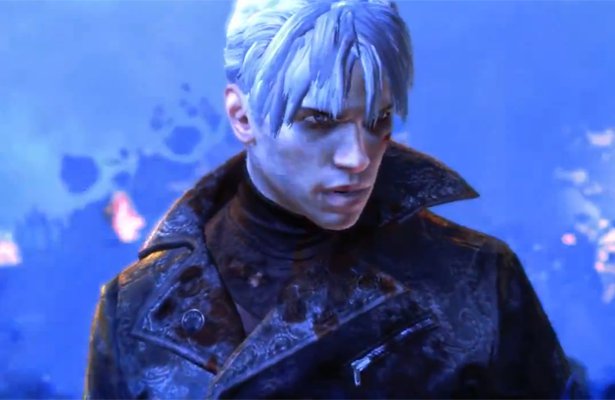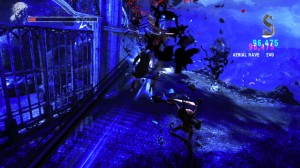DmC DLC – Vergil’s Downfall Review (360)
- Updated: 22nd Apr, 2013

Ninja Theory’s revision of Devil May Cry did a lot of things right. It had fluid combat, grand, almost puzzle-like levels and pacing that, for the most part, stopped DmC from becoming a drag. Vergil’s Downfall is a different beast completely. If you still haven’t played DmC and want to read more you can check out my review here. If you have played DmC or just want to go treading knee-deep in the muddy waters of Spoilerville than keep on reading.
Vergil’s Downfall tells the tale of… well, Vergil’s downfall. Set immediately after the ending of DmC we see Vergil both wounded in body and broken in pride, collapsing over a grave and falling deep down into the depths of hell. Taunted by visions of Dante, his mother and Kat, Vergil wades through the next 6 levels oozing despair and self-pity. Guiding him through all this is Vergil’s creepy alter-ego, whose job is to stand around mockingly and fuel his rage.
Narrative-wise Vergil’s Downfall has nothing on DmC. It’s a short and to be honest rather bland romp dealing with all the classic bad guy tropes, so abandonment, unrequited love and inferiority issues galore. Vergil’s scripting is cheesy and delivered with the same whiny drawl we were accustomed to.
What balances this out is the comic book stylings of the cutscenes. These animated, speechless cutscenes worthy of a Sin City comic are spotted around each level and, while they are odd to see at first, I think they were a good choice by Team Ninja.
Of course DmC isn’t totally about the way it looks and sounds. I’m not saying the narrative isn’t important, I’m just saying that if the game is fun to play we can usually forgive some bad scripting (I’m looking at you Bayonetta). The combat in Downfall is rough to master. Vergil rightly plays differently to his brother Dante. Where Dante is brutal, hurried and wild Vergil seethes with training and finesse and his every move is intentional. Matching this style when actually controlling Vergil is tricky.
Vergil is armed with his sword Yamato and can (rather slowly) fire magical swords at his opponents. He also has access to a blink-up and a blink-down ability that allows makes him disappear and reappear, and of course a whole range of abilities to unlock, including various Devil Trigger options.Vergil’s attacks often leave you vulnerable and his blink abilities are tricky to control with the analogue stick. Of course, when it blends together it leaves you feeling unstoppable but it’s a long road to get there.
The main downside with Vergil’s Downfall is the lack of variety. DmC was oozing with different terrain, enemies, music and encounters. It pushed our ideas of level design and was all the better for it. Downfall doesn’t have the same feeling. Most levels feel like a series of arena fights that just drag on too long. Areas are even re-used in later sections and there only three or four varieties of enemy to fight. The combat mixing Angel/Demon enemies from DmC are gone, so the only use that Vergil’s Nephelim heritage serves is for a few of the annoying platforming stages and to pull or push enemies around the levels. Even the only true boss feels a little of a let down with his obvious combat patterns.
Vergil’s Downfall tries to echo the chaos of DmC itself. It pushes you around and forces you to better acquaint yourself with the skillset. Sadly I came away feeling more like I’d played an empty clone than the extension I was looking for.
For 720 Microsoft Points it’s not totally bad. It does offer extra insight into the series itself and a few more play modes for the hardcore SSS ranking enthusiasts. If you’re looking for a repeat of the bloody romp that was DmC, I’d look elsewhere.




Follow Us!